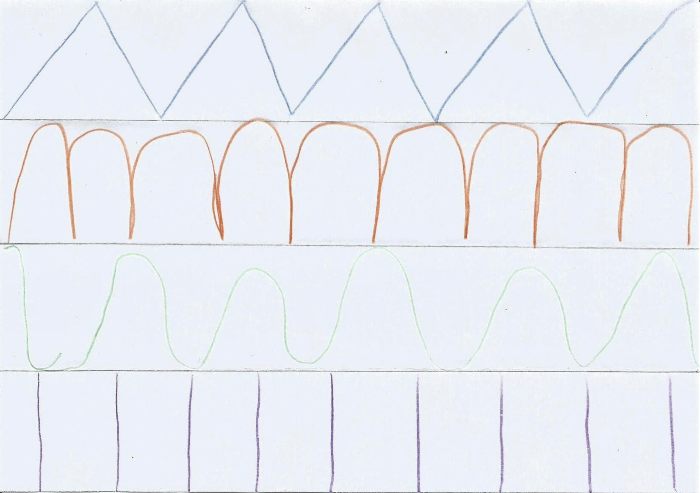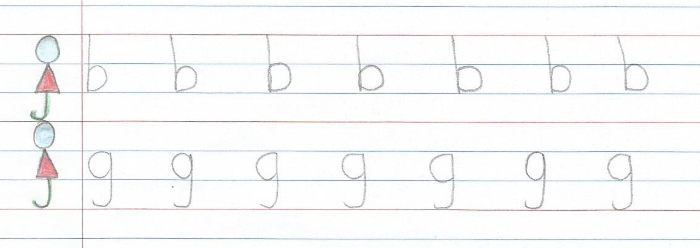Writing is a process that begins long before a child forms letters with a pencil.
It involves building pre-writing skills during preschool, which are necessary for a child to be able to master letter formation and pencil control.
Read on to find out about the importance of pre-writing skills for preschoolers and what simple activities you can do at home or at school.
What are Pre-Writing Skills?
Pre-writing involves building a set of foundational skills that help children learn to write when they are developmentally ready.
Here are just some skills that need to be in place before children are ready to start formal writing:
- Well-developed gross motor control
- Good posture and core control
- The ability to cross the midline
- Bilateral coordination
- A good pencil grasp
- Well-developed fine motor control
- The ability to form basic patterns
To put it simply, teaching a child to write does not begin with letter formation, but rather by building all the pre-writing skills first.

The Importance of Pre-Writing Skills
Why are pre-writing skills important and how do they impact a child’s ability to write successfully? Let’s take a look at all the factors.
Gross Motor Skills
Gross motor skills start forming when a child is born and should continue to be developed well into the schooling years.
Children should be spending large amounts of time each and every day engaging in free play. This is the best way to develop gross motor skills.
In order to learn to write, children must have control of their bodies and develop their gross motor skills. Fine motor control depends on having well-developed gross motor control.
Posture, core control, midline crossing, eye-hand coordination and bilateral coordination (e.g. writing with one hand and controlling the page with the other), are also a part of a child’s gross motor development and are important for developing the ability to write.
Posture and Core Control
Writing involves having the correct posture and core control to be able to sit at a desk for a length of time without tiring.
Children should be sitting straight with their feet flat on the floor and their arms at right angles to the table.
Many children struggle with just this one factor, which impacts everything they do at school and usually means they don’t finish their tasks.
Children who slouch at a desk, get tired or struggle to sit and concentrate, could potentially benefit from seeing a physiotherapist.
Crossing the Midline
The midline is the imaginary line that intersects the body, separating the left and right sides.
Children need to learn to cross the midline so they can perform tasks like writing on the left of the page with their right hand.
It is easy to spot a midline crossing problem when you see that a child’s writing slants from the left of the page towards the right (each new line starts a little further away from the margin).
Pencil Grip
Children must be able to hold a pencil using a mature grip, such as a tripod grasp, and with the right amount of pressure. They need to control the pencil and form letters correctly, without tiring.
With an immature pencil grip, it is difficult to form letters and children get tired while writing as they are often applying too much pressure on the page or do not have a firm enough grip on their pencil.
Fine Motor Skills
Children need lots of practice developing their fine motor skills and finger strength if they are to learn to write correctly.
Preschoolers should be given daily opportunities to engage in fine motor games and activities. With sufficient fine (and gross) motor stimulation, children are able to:
- Write without getting tired
- Use the correct pencil grip
- Form letters correctly – starting at the right place, moving in the right direction
- Write neatly
- Space letters correctly and on the lines
- Make the letters an appropriate size
Forming Patterns
Before a child has enough control to form letters correctly, they need to understand patterns and shapes in letters.
This is done long before letters are introduced, through simple activities with shapes, puzzles, pegboards, drawing patterns, etc.
Writing patterns on a line is then introduced, such as making zig-zag lines, and tracing circular patterns and lines.
These mimic the formations that will be used when forming the letters (e.g. making snake patterns helps form the letter ‘s’, zig-zags are found in a capital ‘A’ and circular and spiral patterns help form the letter ‘c’).
Pre-Writing Activities for Preschoolers
Here are some ideas for pre-writing activities to do with preschoolers at home or at school.
1. Movement Activities
Movement should be a daily staple for every child. They should be moving in various ways:
- running
- climbing
- rolling
- hopping
- pulling
- balancing
- riding
- skipping
- kicking
- catching, etc.
Try activities such as:
- playing with bean bags
- hopscotch
- singing action rhymes
- sandpit play
- hand-eye coordination games
- crossing midline activities
- and other fun games
2. Fine Motor Activities
Fine motor skills can be developed in a number of easy ways, largely through play:
- Drawing and painting
- Cutting and tearing
- Building puzzles
- Playing with pegboards, blocks, shapes
- Beading and threading
- Making patterns with blocks and beads – according to shape, colour and size
3. Playing with Letters
Letters and numbers made out of wood, foam or plastic are a great way to introduce writing. Touch the letters, trace them with your fingers and show the letter formation (where to start and how to form the letter).
4. Forming Patterns
When your child is holding a pencil properly without tiring, they are ready to start the patterning stage.
Using rubber pencil grips will make a huge difference as their fingers will rest in the correct position from an early age.
Pencil grip is another thing that is extremely difficult to correct once an incorrect habit has been formed.
When I taught the first grade, we would spend the first part of the year doing patterns, before we moved on to letters.
As always, start large and go smaller.
Take a large piece of paper or use chalk on the paving outside. Make patterns such as the following:
- Scribble in large circular movements, first to the left (as in the letter ‘d’), then to the right (as in the letter ‘b’).
- Scribble in zig-zag movements, first up and down, then left to right.
- Make other patterns in the sand such as waves, straight lines, etc.
It is then time to move on to writing patterns on paper. Before starting, spend 5 minutes doing some finger-strengthening exercises, such as flicking, shaking or crumpling a piece of paper with one hand.
- Take an A4 page and turn it to landscape.
- Divide it into 3 or 4 strips by folding or drawing lines.
- Form a pattern on each line.
Here are some examples:

Spend some time just doing various patterns and soon, your child will be ready to start learning individual letters.
From Pre-Writing to Formal Writing
Once these patterns are mastered, and gross and fine motor skills are well developed, a child is ready to start forming letters. This follows a fairly predictable pattern:
- Letters are first introduced on a large scale – such as on big paper or written on a board.
- When the formation has been practised on a larger scale, the child is ready to begin writing on special paper with multiple lines.
- Children must learn to start at the correct point and follow the procedure for each letter (e.g. to make a letter ‘b’ start at the top, go down, up and around to the right and close the circle). They also learn to leave spaces between letters.

- The next phase is putting letters together to form words, which are then separated by spaces.
- These words then form sentences and simple punctuation can be introduced, such as using capital letters and full stops.
- Lastly, children are taught to form paragraphs, which leads to story-writing.
- When a child is ready, they will no longer need to write on multiple lines but can use single lines. By then, their letters will be well formed and their writing at an appropriate size for the lines they are writing on.
And there you have it! Your child will have gone through the necessary steps to go forth and become a good writer.
Read more about the developmental stages of learning to write.


Saima Rafiq
Monday 23rd of January 2023
Excellent
Tanja Mcilroy
Monday 23rd of January 2023
Thanks, Saima!
Goitsemang Gaoatswe
Wednesday 11th of January 2023
Good read excellent work.
Tanja Mcilroy
Thursday 12th of January 2023
Thanks for reading!
Latha Somathilake
Monday 26th of December 2022
Dear Tanja It's really a very informative piece of writing. Thank you for sharing your knowledge with others. Good luck!
Tanja Mcilroy
Monday 26th of December 2022
Thank you, Latha!
Anupama
Thursday 6th of May 2021
Beautifully explained Tanja!!
Tanja Mcilroy
Thursday 6th of May 2021
Thanks for reading, Anupama!
Vidhi
Thursday 31st of December 2020
Hey I’m at this stage with my first toddler and you’ve been by far the best guide in every day teaching for him. Thank you for your fine detailed explanation for all your articles:)) I looooove reading them and applying the ideas in real life. Thanks so much once again!!!
Tanja Mcilroy
Friday 1st of January 2021
Thanks so much for this comment Vidhi! You've made my day. Happy new year and thanks for reading. I'm really pleased the articles are helpful. Tanja